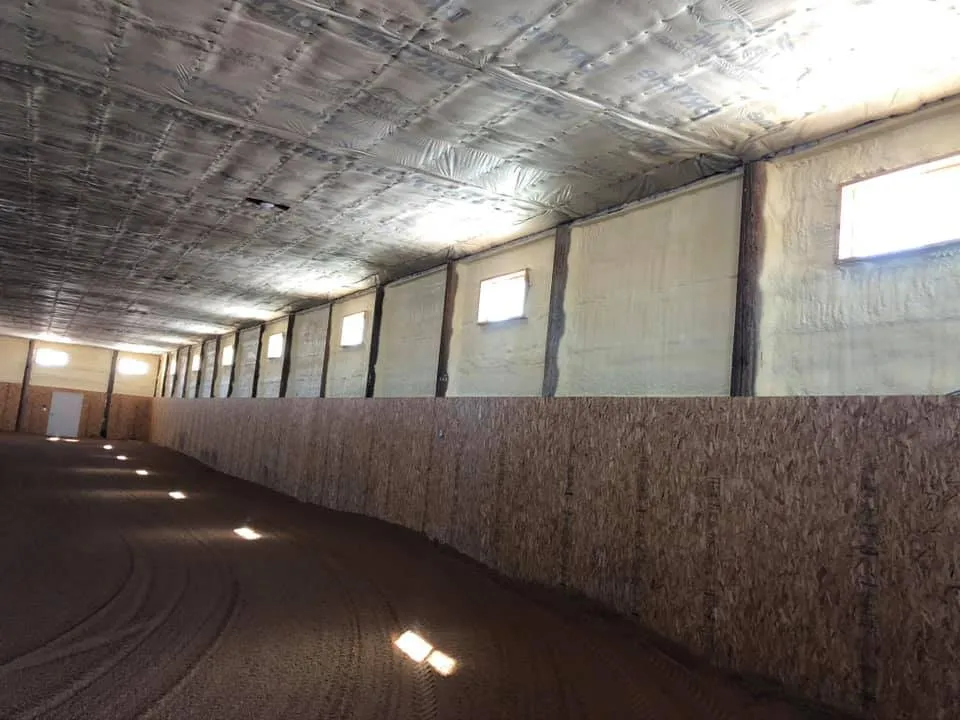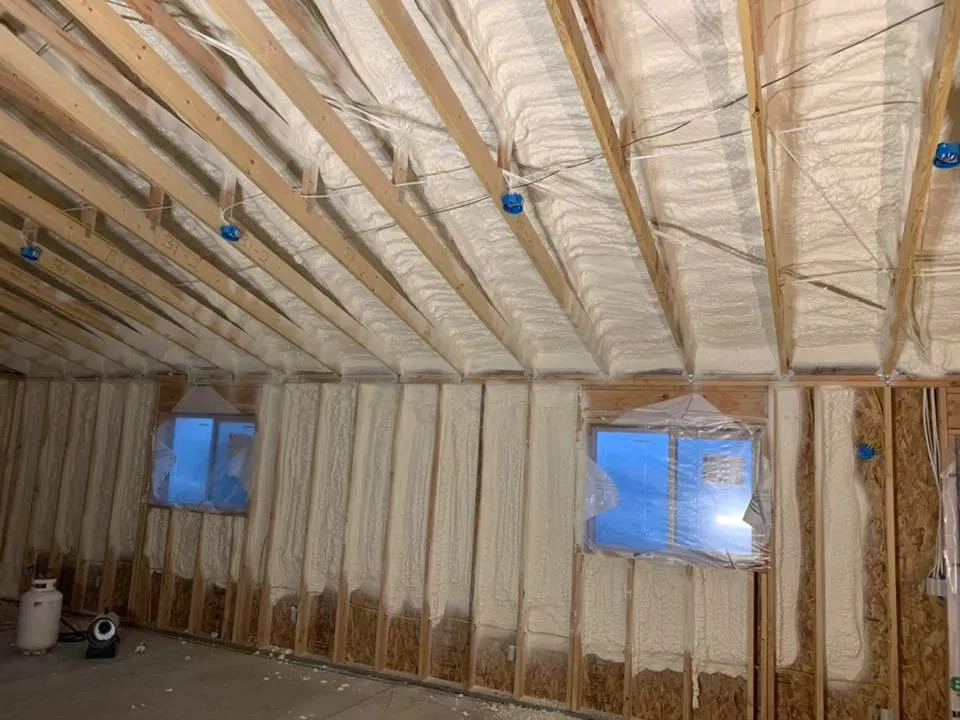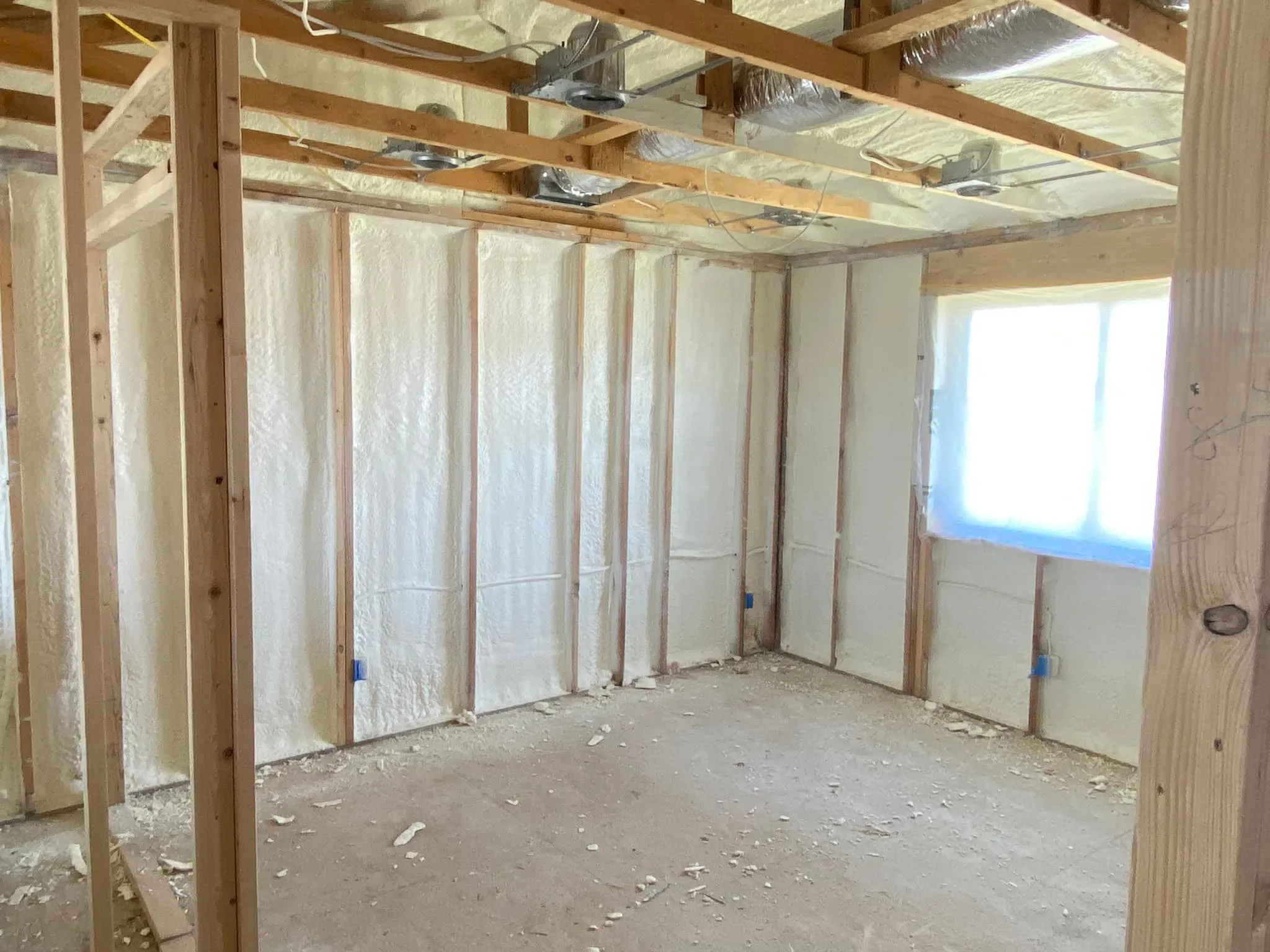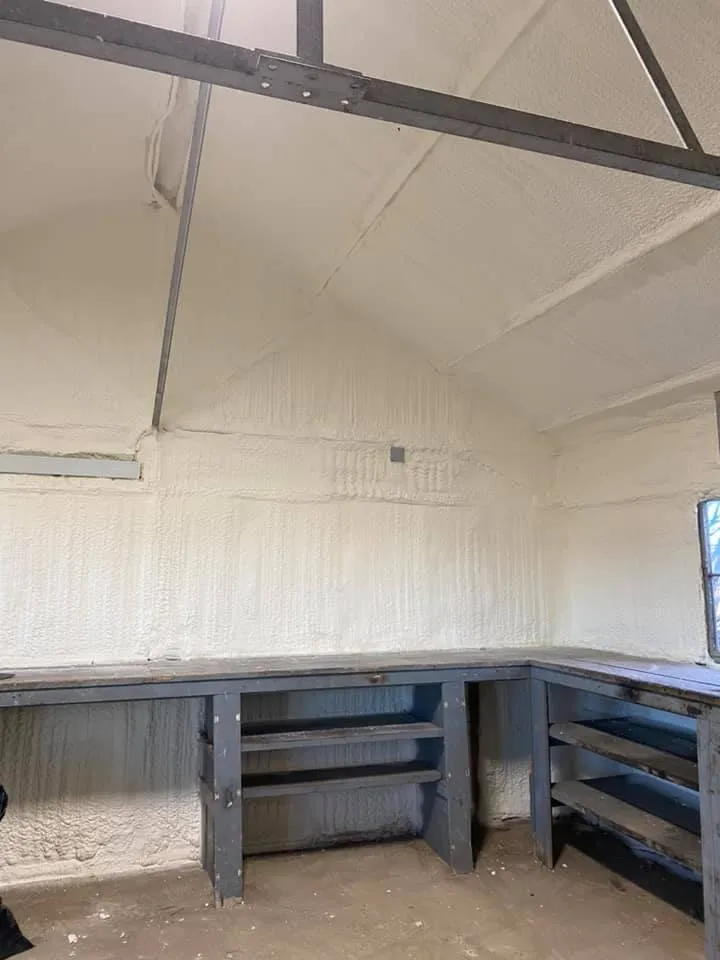

Spray foam insulation delivers significant energy savings and comfort improvements for older homes in Pocatello, particularly those built before 1980 with inadequate insulation and extensive air leaks. The investment typically pays for itself within 5-8 years through reduced heating costs, while addressing the unique challenges of southeastern Idaho’s continental climate with temperature swings from -10°F to 95°F.
Pocatello’s older housing stock faces distinct insulation challenges due to construction methods from the 1940s-1970s that prioritized speed over energy efficiency. These homes often contain minimal wall insulation, uninsulated rim joists, and significant air infiltration points that traditional insulation methods cannot adequately address.
Drawing from extensive experience with older home retrofits across southeastern Idaho, this analysis examines the practical considerations, performance expectations, and decision factors specific to Pocatello’s climate and housing characteristics.
Pocatello experiences 6,985 heating degree days annually, placing substantial demands on home heating systems. Older homes typically lose 25-40% of their conditioned air through uncontrolled air leakage, creating comfort issues and energy waste that spray foam specifically targets.
The region’s dry climate with average humidity below 30% during winter months affects how different insulation materials perform. Traditional fiberglass batts lose effectiveness when air moves through them, while spray foam creates an air barrier that maintains its R-value regardless of air movement.
| Insulation Type | R-Value per Inch | Air Sealing | Moisture Control | Installation in Tight Spaces | Lifespan |
|---|---|---|---|---|---|
| Closed Cell Spray Foam | 6.0-7.0 | Excellent | Vapor Barrier | Excellent | 30+ years |
| Open Cell Spray Foam | 3.5-4.0 | Very Good | Permeable | Good | 30+ years |
| Fiberglass Batts | 3.1-3.8 | None | Poor | Difficult | 15-25 years |
| Blown-in Cellulose | 3.2-3.8 | Minimal | Good | Fair | 20-30 years |
| Mineral Wool | 3.0-3.3 | None | Good | Moderate | 50+ years |
Spray foam addresses three critical issues common in pre-1980 Pocatello construction: inadequate insulation levels, extensive air leakage, and difficult-to-reach cavities. Unlike traditional insulation that requires precise fitting, spray foam expands to fill irregular spaces around old framing members and utility penetrations.
Bonus Tip: Target rim joist areas first in older homes – these typically uninsulated spaces can account for 15-20% of total heat loss and are easily accessible during basement improvements.
The material’s ability to seal air leaks while insulating makes it particularly effective for older homes where achieving proper air sealing with traditional methods proves challenging or impossible.
| Application Area | Recommended Thickness | Expected R-Value | Air Leakage Reduction | Typical Coverage |
|---|---|---|---|---|
| Rim Joists | 3-4 inches | R-18 to R-28 | 85-95% | 150-200 sq ft |
| Basement Walls | 2-3 inches | R-12 to R-21 | 90-95% | 800-1200 sq ft |
| Crawl Spaces | 2-4 inches | R-12 to R-28 | 80-90% | 300-600 sq ft |
| Attic Areas | 6-10 inches | R-21 to R-70 | 70-85% | 1000-1500 sq ft |
According to the Department of Energy’s residential energy consumption data, homes built before 1980 consume 30% more energy per square foot than newer construction, making insulation upgrades particularly cost-effective in this building category.
Evaluate your home’s current insulation levels and air leakage patterns before selecting spray foam applications. A professional energy audit can identify the most cost-effective areas for improvement and help prioritize investments based on potential energy savings.
Consider the accessibility of target areas and whether partial applications will meet your goals. Spray foam works best as part of a comprehensive approach rather than spot treatments, particularly in older homes with multiple thermal bridging issues.
Bonus Tip: Schedule installation during mild weather periods (50-85°F) for optimal curing conditions. Pocatello’s spring and fall seasons provide ideal temperature ranges for spray foam application.
Moisture management becomes critical in older homes where existing vapor barriers may be compromised or incorrectly installed. Closed-cell spray foam can serve as a vapor barrier, while open-cell foam requires careful moisture management planning.

High Country Solutions provides comprehensive insulation solutions specifically designed for older home challenges:
Spray foam insulation maintains its performance characteristics for decades without settling, shifting, or degrading. This stability particularly benefits older homes where accessing insulation areas for maintenance or replacement proves difficult or expensive.
The material’s durability means one-time installation typically lasts the remaining life of the home, unlike traditional insulation that may require periodic replacement or supplementation.
Bonus Tip: Document spray foam installation areas with photos for future reference during electrical, plumbing, or HVAC modifications, as the material requires specific tools for clean removal if access becomes necessary.
Spray foam requires balanced ventilation planning, particularly in older homes that relied on natural air leakage for ventilation. Mechanical ventilation may need upgrading to maintain indoor air quality.
In most cases, existing insulation should be removed or modified to ensure proper adhesion and performance. Spray foam works best when applied directly to structural surfaces.
Unlike loose-fill materials, spray foam maintains its position and doesn’t settle over time, making it ideal for older homes that may experience structural movement.
Spray foam insulation represents a significant upgrade for older Pocatello homes, particularly those experiencing high energy costs, comfort issues, or indoor air quality concerns. The investment typically provides measurable returns through reduced energy consumption and improved living conditions.
Evaluate your home’s specific conditions, energy usage patterns, and long-term ownership plans when considering spray foam applications. Professional assessment can identify the most cost-effective approach for your particular situation.
Determining the right insulation strategy for your older home requires understanding your specific building characteristics and energy goals. High Country Solutions provides comprehensive evaluations that identify the most effective improvements for Pocatello’s climate conditions.
Contact High Country Solutions at (307) 248-9063 or [email protected] to schedule a detailed assessment of your home’s insulation needs and discuss customized solutions for older home challenges.
Closed-cell spray foam actually reduces moisture infiltration by creating an effective vapor barrier. However, proper ventilation planning becomes essential since natural air exchange through building envelope leaks will be significantly reduced.
Installation typically requires 1-3 days depending on the scope of work. Older homes often require additional preparation time for access and surface preparation, particularly in crawl spaces and rim joist areas.
Open-cell spray foam allows moisture vapor transmission, enabling walls to dry toward the interior. Closed-cell foam creates a moisture barrier, requiring careful moisture management design to prevent trapped moisture issues.
Spray foam can be removed using specialized tools and techniques, though the process is more involved than removing traditional insulation. Planning for future access needs should be considered during initial installation.
Spray foam maintains its insulating properties across temperature extremes better than traditional materials. Its expansion and contraction rates match most building materials, preventing thermal stress issues common with rigid foam boards.


